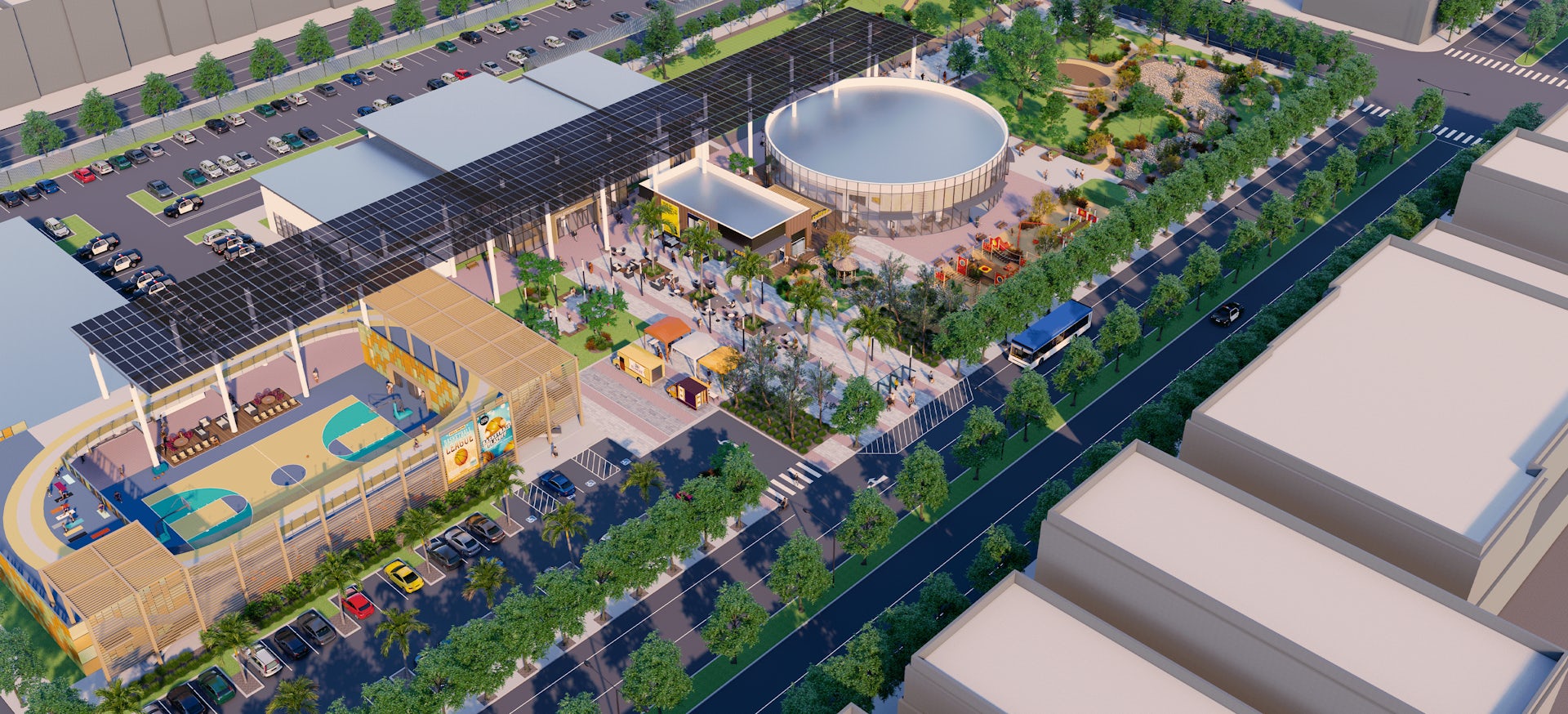Around the country, law enforcement agencies are looking for ways to develop safer communities and build trust between the community and the officers sworn to protect them.
Earlier this year, LPA designers began to explore how a different type of public safety facility might improve the relationship and change the dynamic between law enforcement and the public. Beyond a simple hybrid of uses, could facilities be redesigned to create benefits for neighborhoods and police departments?
Police stations are designed with a focus on safety and security. This often has been interpreted as predominantly windowless buildings with little thought given to how the community interfaces with police officers. Fundamentally, any public safety facility must be designed first and foremost as a secure facility to handle the complex tasks of law enforcement, with stringent requirements for access and the ability to respond to a wide array of threats and disasters.
Forward Thinking: Connecting the Police and the Community
A new concept for a public safety facility breaks down barriers and creates shared facilities between the neighborhood and law enforcement.
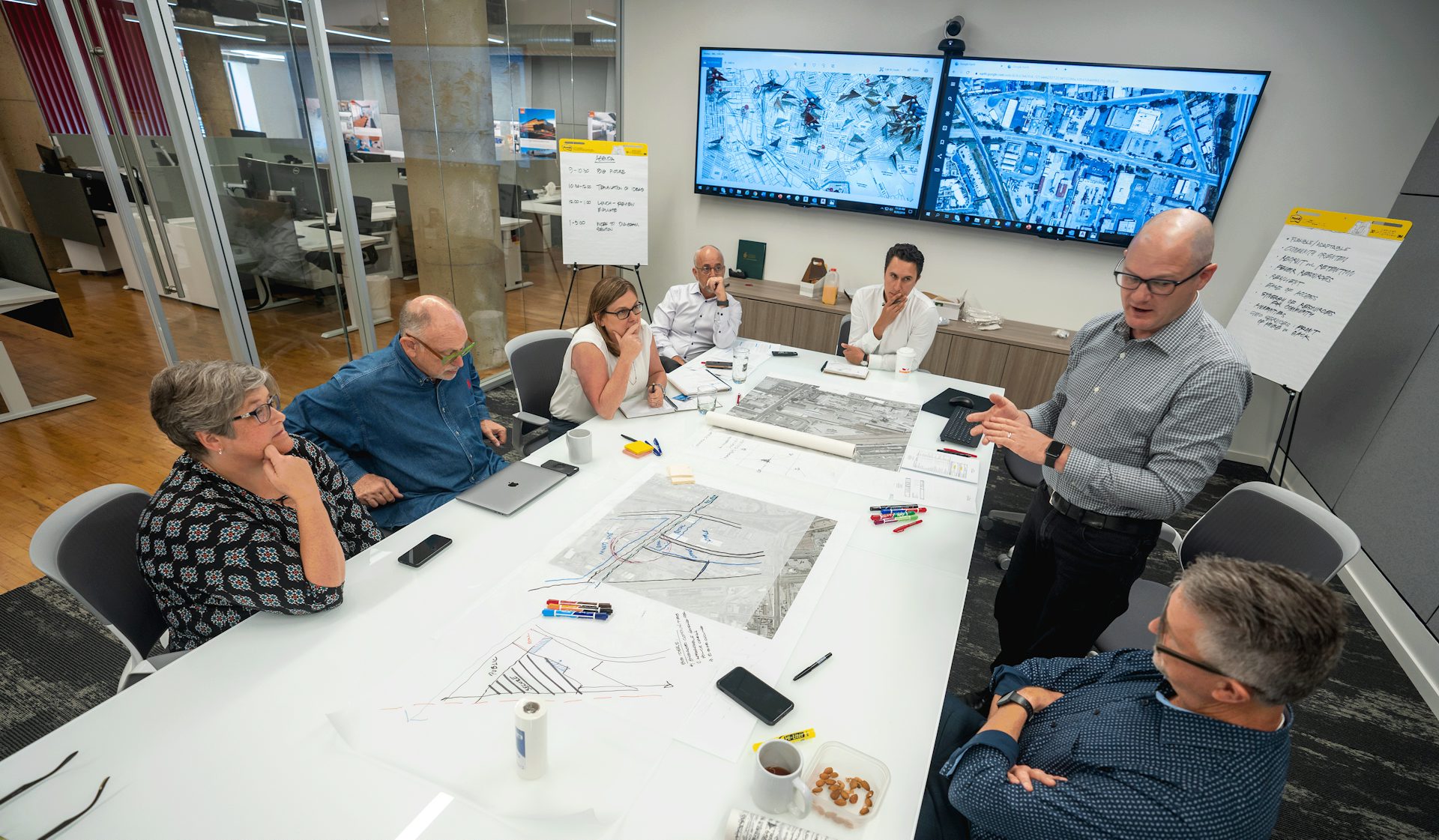
The challenge for designers: create a hardened facility that is welcoming to the public, without interfering with the primary tasks of law enforcement. Modern police stations have very specialized components, yet success today requires balancing those unique needs with the realities of community expectations.
“Can we design a facility that changes the public perception of the police department?” asked LPA Director of Civic + Cultural Jeremy Hart, during a charrette convened in LPA’s Dallas office.
The charrette included designers from LPA and Jim McClaren, AIA, Senior Principal in McClaren, Wilson & Lawrie, Inc., an architectural firm specializing in law enforcement and the forensic sciences. The charrette discussion quickly moved to the different opportunities presented by a facility. “How can this contribute to a cost-effective way to solving other issues?” McClaren asked.
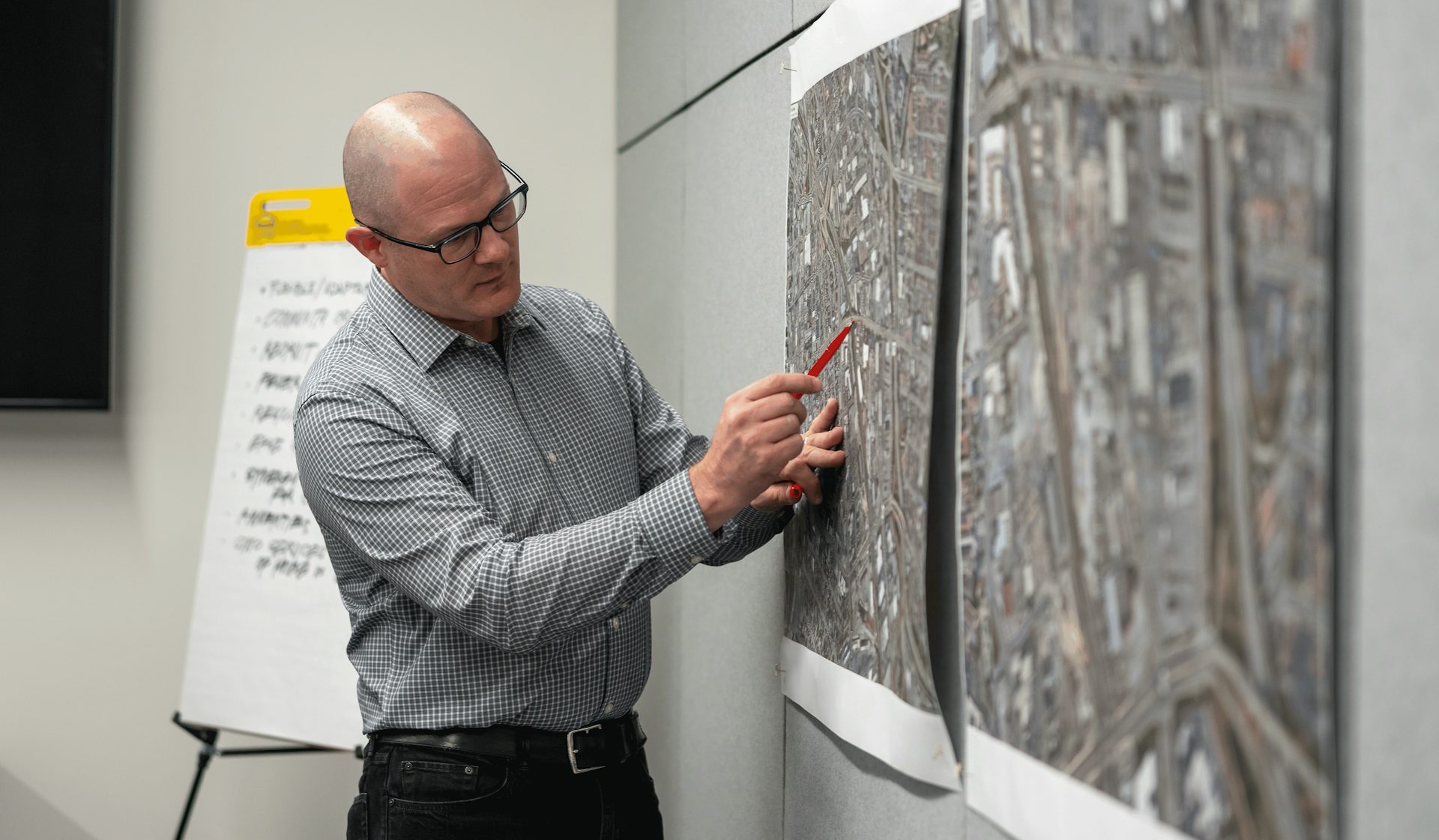
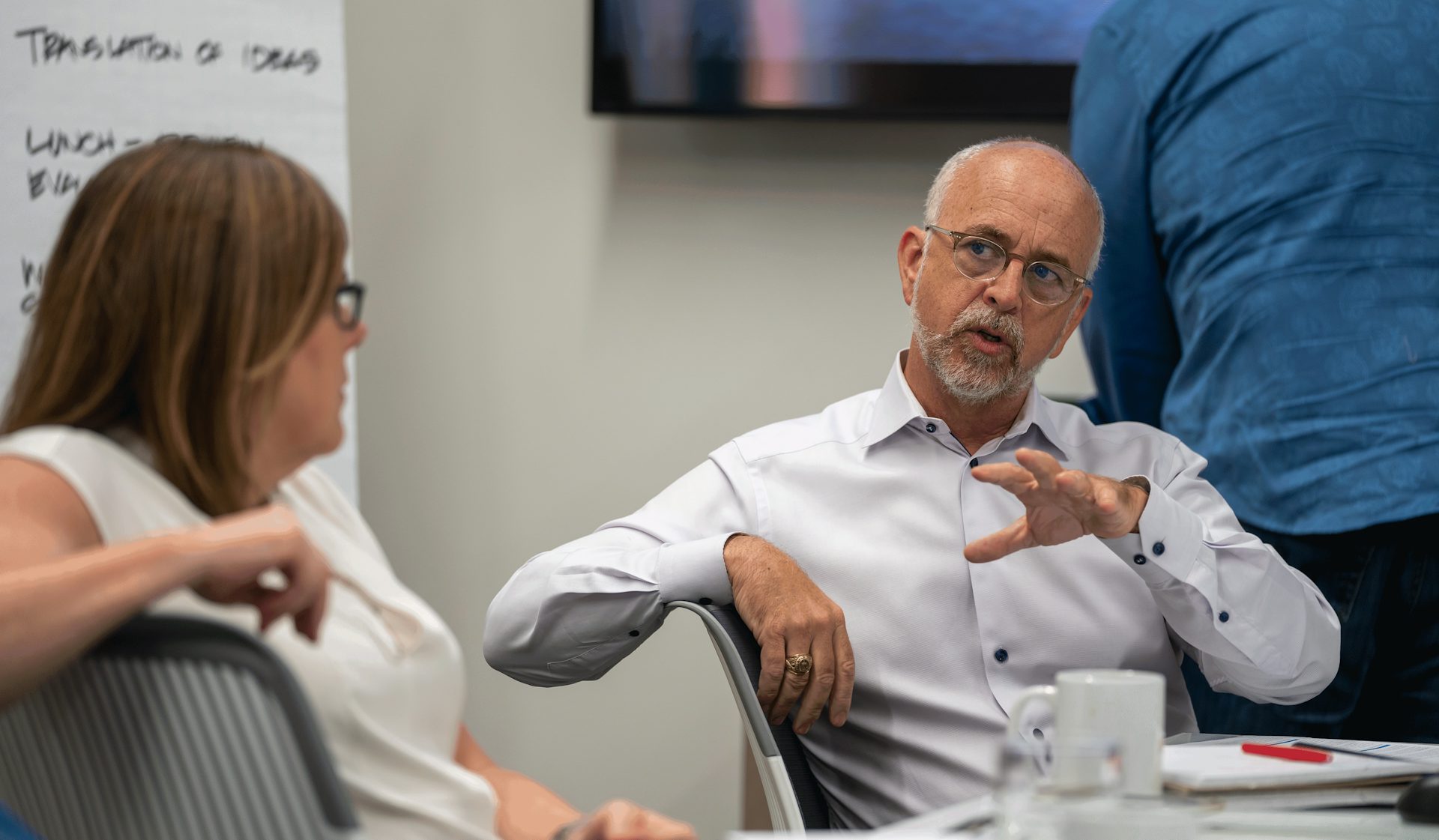
McClaren worked with LPA on the design of a new 69,000-square-foot Public Safety Center for the city of Salinas, California, which helped guide the conversation into the challenges facing diverse communities. The Salinas facility was developed in a public-private partnership and included several community benefits, such as shared meeting space and a public plaza.
A public safety facility can support a wide variety of public tasks, from providing a secure area for child custody transfers to a safe space for people to exchange goods purchased online, McClaren noted.
On a more fundamental level, facilities of the future need to address the larger issues of law enforcement. Departments are increasingly challenged to attract and retain top officers. Training and a healthier work environment are essential to help prevent the incidents that are inflaming divides in communities. There is a need for transparency, but more glass in the buildings is not the answer, designers agreed.
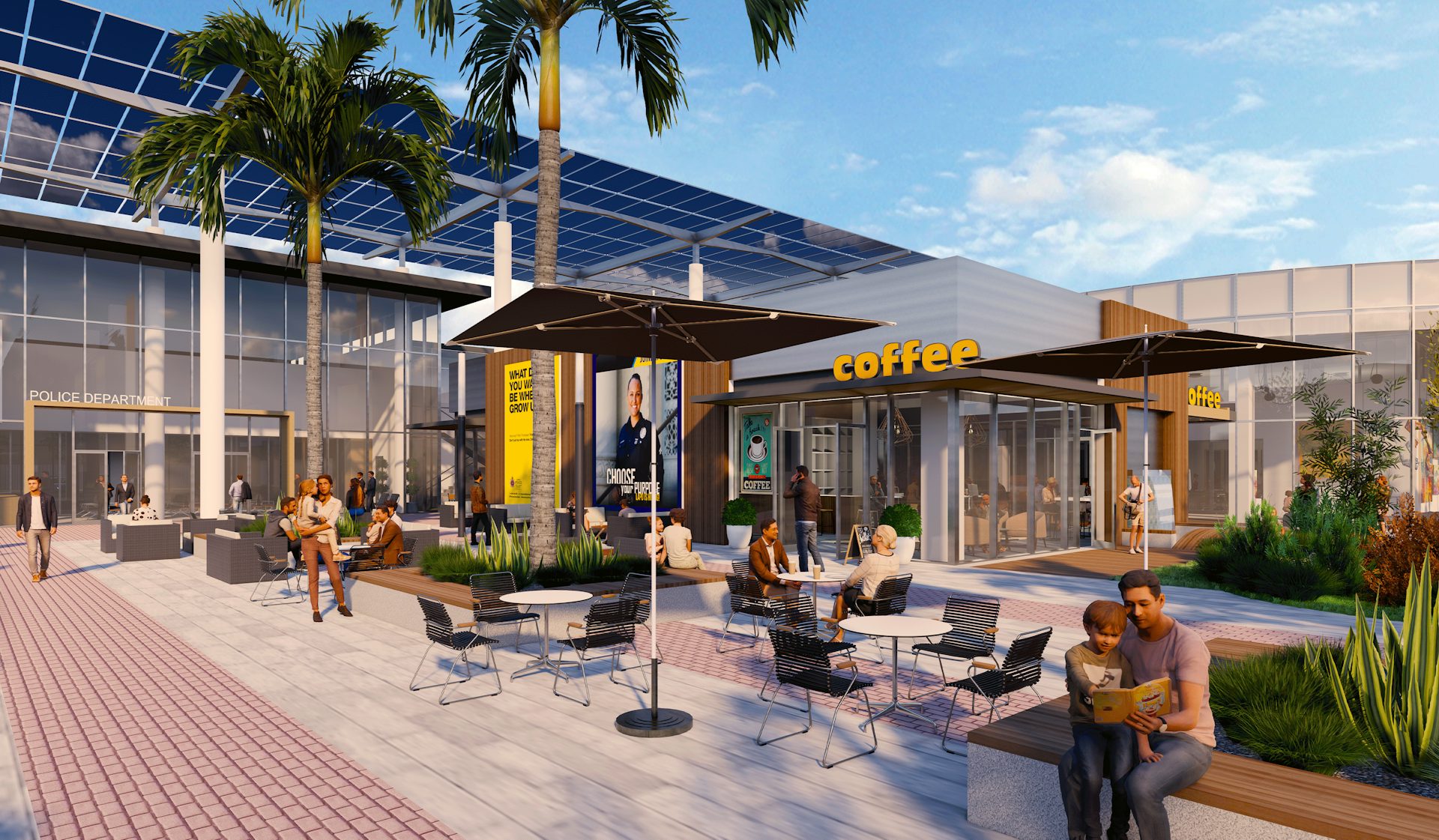
“What about the social and emotional issues in the community?” LPA San Antonio Studio Director Sara Flowers asked. “This is not just a facility for criminals. It needs to build relationships.”
As ideas began to form into design solutions, LPA designer Anna Nasonova brought clarity to the discussion. Reaching back to the writings of Plato, who examined the qualities necessary in those chosen as “guardians of the state,” Nasonova reminded us that police officers need the “spirit,” strength and courage of warriors, as well as the “philosophy,” gentleness and temperance of wisdom to be successful public servants.
Elements of “spirit” and “philosophy” are represented in the finished design. The goal is to help develop better officers by supporting them, while creating a facility that embraces the community and creates new shared amenities.
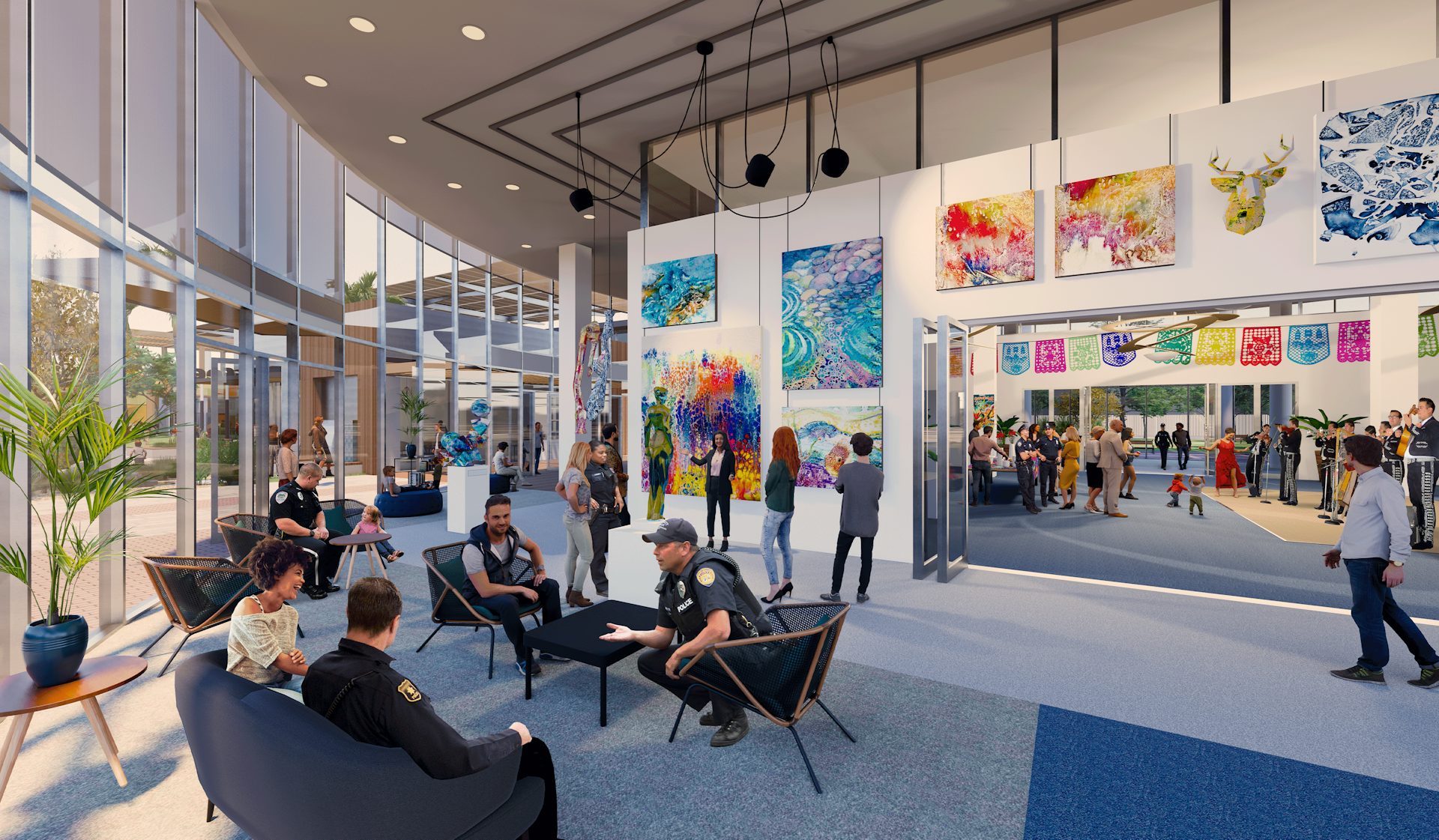
Spirit: The design concept finds the overlapping priorities of law enforcement and the needs of the community. A shared training center and athletic facility addresses the health and wellness of officers and the neighborhood, creating spaces where they can share pick-up basketball games, self-defense classes and hold youth soccer tournaments.
Philosophy: A different type of community center creates a cultural and social hub, providing opportunities for mental well-being and growth. Multicultural events, a continuing education center and a public café provide opportunities for police and the community to interact in different ways, expanding the relationship on a day-to-day basis.
The Spirit and the Philosophy of the design are connected by a public circulation spine that serves as a link between the secure police functions and the shared public zones. The operations of law enforcement are maintained, while developing new links to the community and providing a place where everyone can feel safe.
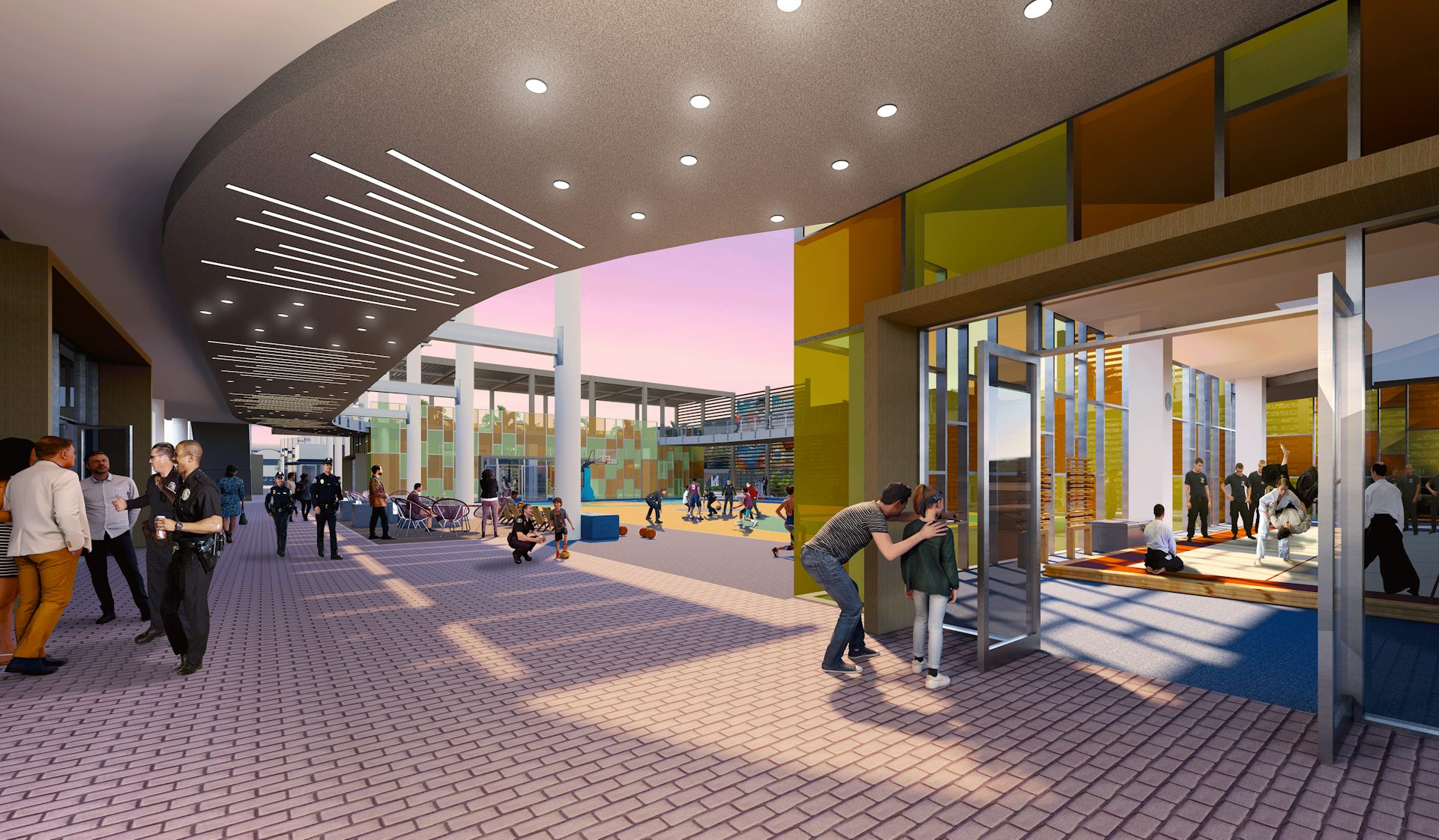
A NEXT-GEN PUBLIC SAFETY BUILDING
The concept for the public safety facility addresses the needs of law enforcement and the community. The emphasis is on a balance between the specialized requirements of the police operation and the desire to find new ways to link with the public. Shared amenities serve officers and the neighborhood. New opportunities are presented for interaction and dialogue. At the same time, the design offers a cost-efficient approach for developing a site that provides facilities and services to address the health, cultural and social challenges in communities.
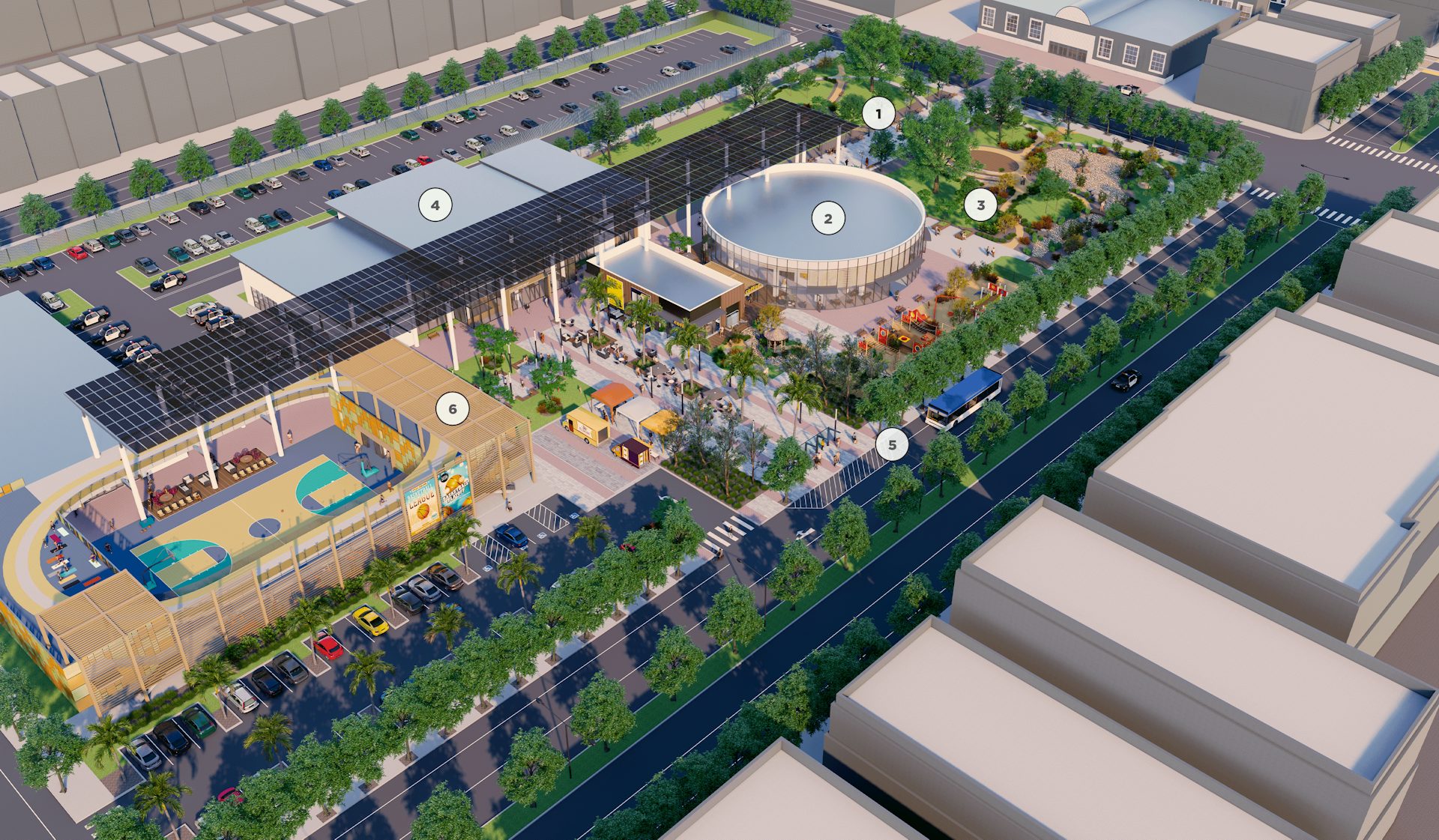
1 - A PUBLIC CIRCULATION SPINE connects the police facility with the public zones. The walkway links directly to a transit station to improve community access.
2 - A COMMUNITY CENTER serves as a cultural and social hub, addressing “philosophy” and providing opportunities and resources for the growth of officers and the community. A public café creates a place for casual interactions.
3 - A PUBLIC PARK is a resource for the entire community, with playgrounds and spaces for neighborhood events. It also gives officers a place to relax with their families.
4 - THE POLICE STATION remains a secure facility with separate access and protected parking for officers. Tall glass creates a welcoming presence and brings natural light into the facility.
5 - A TREE-LINED PUBLIC PLAZA serves as a central circulation zone for the public, connecting the different services and creating an inviting entrance to the facility.
6 - A SHARED TRAINING AND ATHLETIC FACILITY addresses the “spirit” of officers and the neighborhood. From a basketball court to yoga spaces, the facility elevates the health and well-being of the community.


